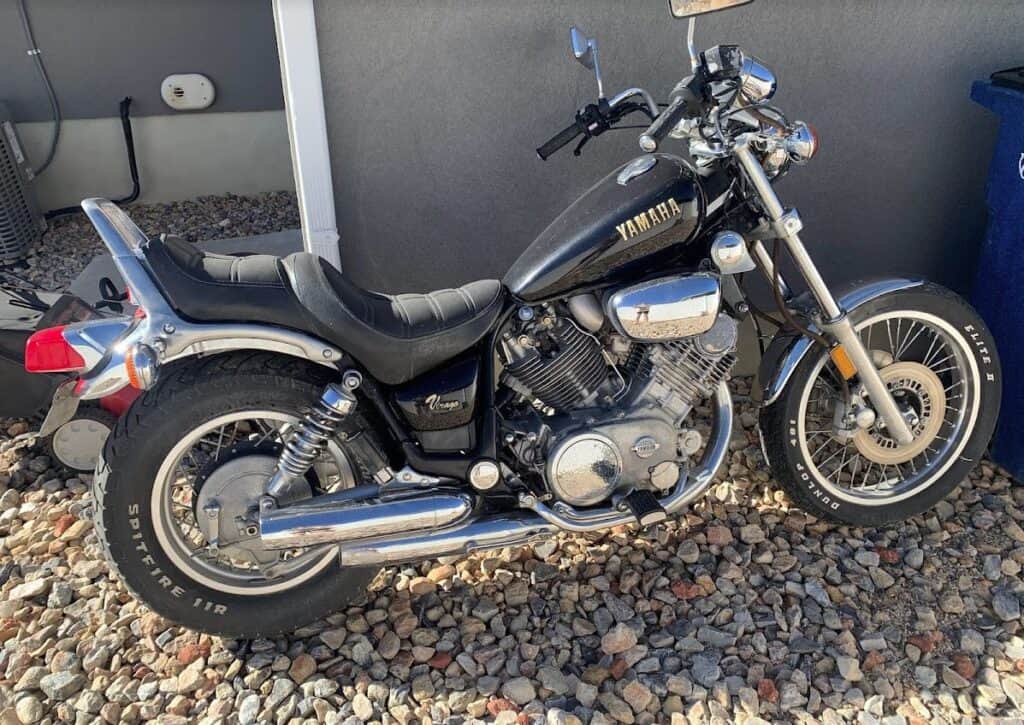
Sometimes life gets so busy that you just don’t have the time you need to spend with your beloved motorcycle. And it just sits and sits. When I’ve left my motorcycle sitting for long periods of time, I’ve wondered what the negative impacts are while it just sits.
Many times I have bought motorcycles that had been sitting for years without moving, one of them since the mid 70’s. After restoring almost 20 motorcycles have that been sitting for years, I’ve come to know exactly what happens to motorcycles when they sit for long periods of time.
What happens when a motorcycle sits for too long? When a motorcycle sits for too long, it’s possible for the following to happen:
- Paint peels on the tank
- Seals and gaskets shrink and crack
- Tires become brittle and create flat spots
- Battery drains
- Condensation builds up in carburetors and engine
- Fuel “gels” up
- Rust
- Stiff and unlubricated chain
There are other possible consequences, but these are the biggest ones to be concerned about.
There’s a lot to consider if you have a motorcycle that’s been sitting or if you are thinking about buying a motorcycle in such a condition. Assessing the situation is required to keep your motorcycle in optimal shape.
Why Parts Start Breaking Down
If your motorcycle is sitting out in the elements with no cover, you run a higher risk of damages. Extreme temperatures are not friendly to machinery. If your motorcycle does have a cover and/or is stored inside a garage or shed, these damages are less likely to happen as quickly, but can happen over a longer period of time.
Let’s start with why the paint on a motorcycle tank will peel. If the tank has excess exposure to the sun, the UV rays damage the clear coat first then ultimately the paint. You may notice it bubbling up and chipping away. Once that happens, the paint is more exposed and will keep getting worse. Click here to see my article that discusses more about what happens when you leave a motorcycle sitting in the sun.
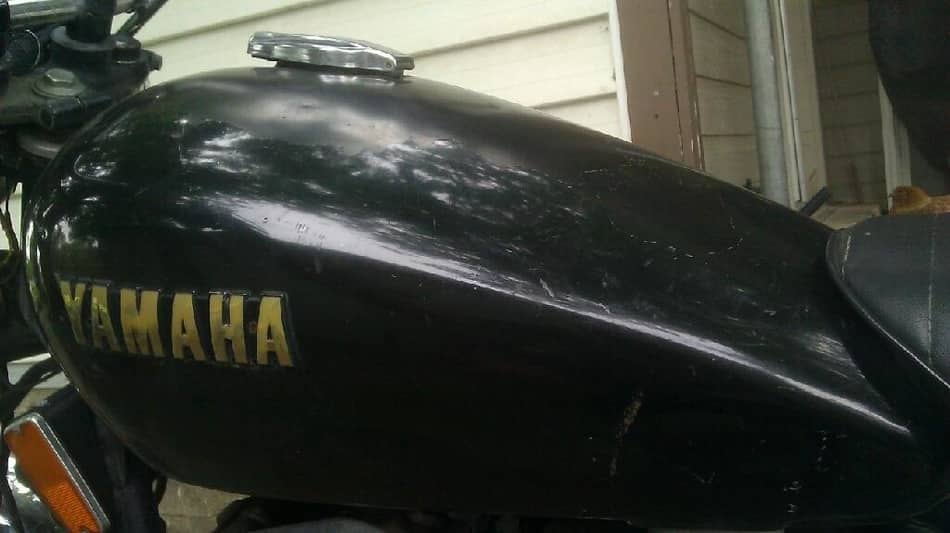
The gaskets on your motorcycle are a lot like a rubber band. If you don’t ever stretch and use it, it loses it’s elasticity and becomes brittle. Stretching and exercising it makes it last longer. The same applies to your motorcycle’s seals and gaskets. Using your motorcycle exercises the seals and gaskets because they heat up, expand, and create a tighter seal. If these parts remain dormant, they become brittle and let fluid leak.
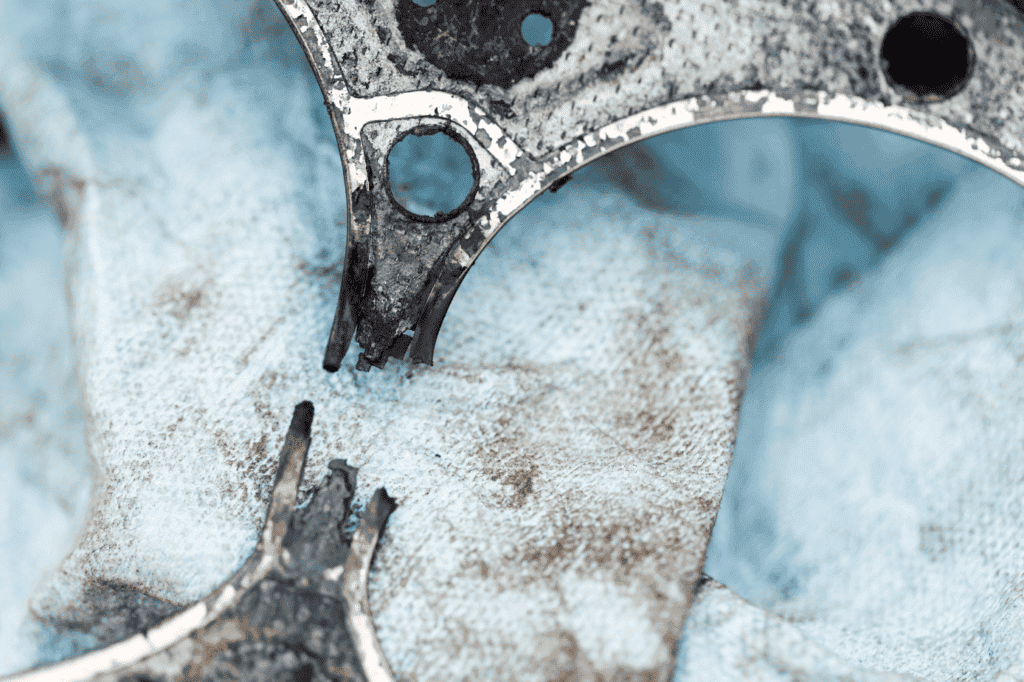
If unused, over time your motorcycle battery will drain. There is a phenomenon called “parasitic drain” where the motorcycle computers and poorly grounded wires cause slight discharge. This is especially common for motorcycles older than 10 years old. If you let your motorcycle sit for long periods of time, this will completely drain the battery. Check out this article of mine for more information.
If you live in colder or more humid climates, it is possible for water to get into the carbs and engine. This happens either through letting your motorcycle sit with open carbs or through condensation. Again, having a cover over your motorcycle or storing it in a garage or shed will help with this, however those freezing temperatures may ensure that water still finds their way inside.
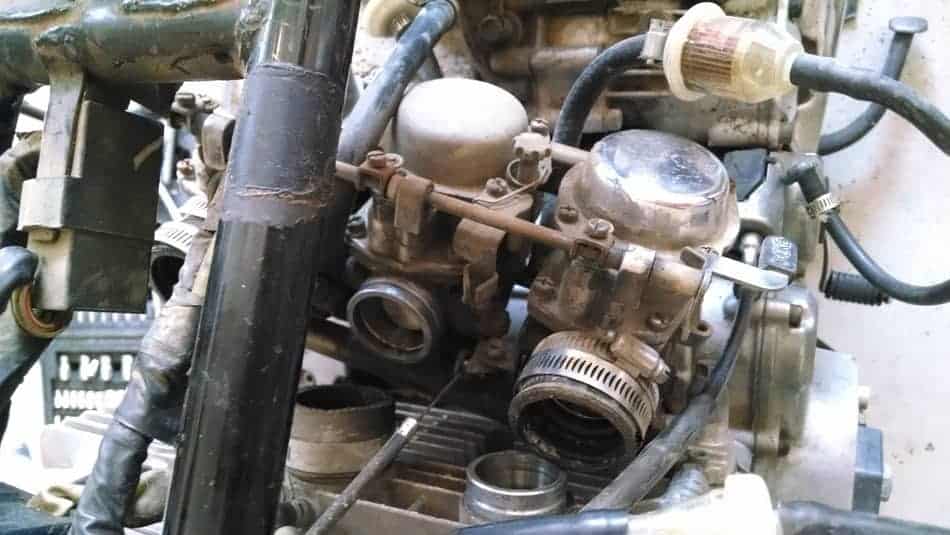
It is actually very possible for the gas in your tank to go bad. If it is not in an air tight container, the exposure to oxygen destabilizes the gasoline, causing it to become a sticky, gel-like substance. You’ll also notice a foul smell. When gasoline becomes like this, it is completely unusable and you will not be able to start your motorcycle.
If you plan on letting your motorcycle sit for an extended period of time, be sure to either drain all the fuel or add a fuel stabilizer. For more information about how long it takes for gas to go bad in a motorcycle, see my article here.
When there is moisture in the air, iron and oxygen can react creating iron oxide, or rust. Rust is likely inevitable for most machines, but it will form much more quickly when motorcycles are dormant. That is because regular use disturbs the iron and oxygen reaction and hinders the formation of rust due to touching, high speeds, etc.
A dormant chain can cause a slew of problems with your motorcycle. If you’ve let your machine sit, the oil on your chain can either dry up or gather dirt/dust, mix with what’s left of the oil, and create a “cement” of sorts. This can seize the chain.
Here’s our YouTube video that explains this more in depth:
How Long Is Too Long To Let a Motorcycle Sit?
It’s completely understandable that you can’t take your motorcycle out for a ride every day, or even every week. Weather also has a lot to do with this, and if you live in a place with harsh winters, it may be months before you can safely ride your motorcycle.
However, you should never let your motorcycle sit for longer than a month if it has not been properly stored. After a month of sitting, you can start getting into some big issues we’ve discussed in this article. Some will say that they’ve let their motorcycle sit for longer and were fine, but I’ve personally seen problems after just 30 days of dormancy.
This does not mean you have to take it for a long ride every month, this just means to turn it on, let it idle for a few minutes or long enough for it to heat up and make sure everything is working properly.
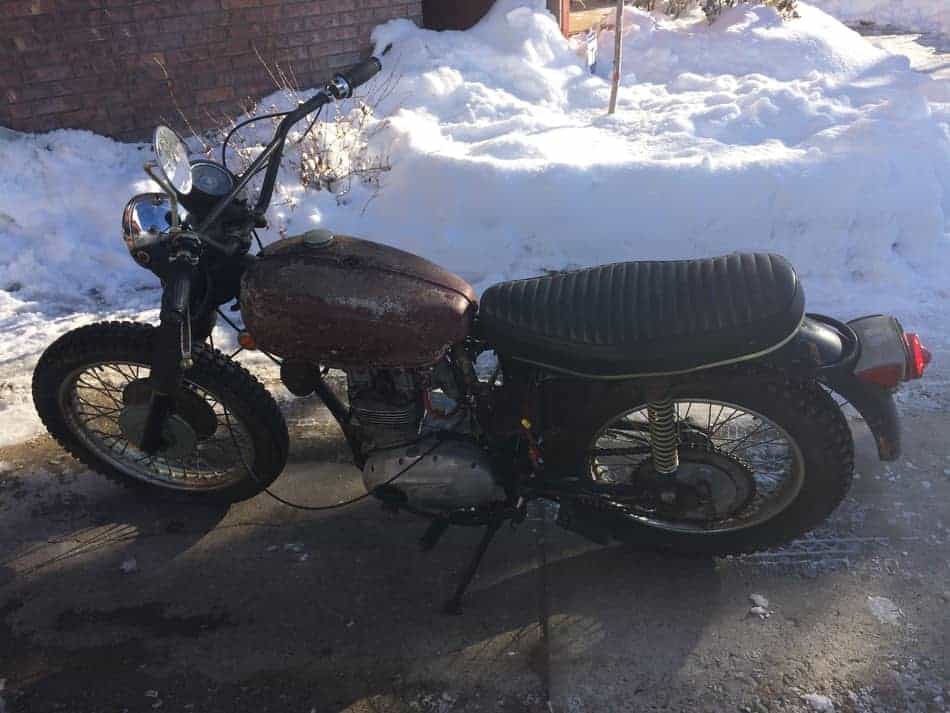
If you need to park and/or store your motorcycle for long periods of time, it’s a good idea to get lay-up insurance. This coverage will assist in the case your motorcycle is damaged while it’s dormant. Keep in mind that this only covers stored/parked motorcycles and does not apply on the road. For insurance options near you, click here to view and compare rates.
How to Revive a Motorcycle That Has Been Sitting
After reading the last section you may have thought “well shoot, my motorcycle’s been sitting for a year,” or had a similar thought. Don’t worry, you can still get everything back in shape for the riding season.
Letting a motorcycle sit isn’t good for it, but that doesn’t mean you break it to a point it’s unusable. There are simple ways to counteract the time it’s been sitting; here’s what I have found to be helpful.
First, check the vital things. If your battery is dead, try charging it before replacing it. Top off or replace the oil and make sure the chain has the proper lubrication.
Replace the tires and never attempt to fix them yourself. You never ever want to be riding your motorcycle and have a tire blow. If you notice any rust spots anywhere, a great remedy is to sand and paint over it. By sanding off the rust and painting it you’re creating a chemical barrier between the iron and oxygen, that way iron oxide (rust) can’t form.
Here’s what to do if you notice your clear coat on the tank is pealing. Wet sanding with 200 – 400 grit sand paper will strip the chipped clear coat. Once that’s sanded away, simply add a new clear coat. If the paint is chipping, you’ll need to repaint your tank. Check out our article here for more information on how to paint a motorcycle gas tank.
It’s a good rule of thumb to clean out your carburetors. Chances are, if it’s been sitting a while, aside from moisture, there’s also a lot of “gunk” that has built up inside them. Cleaning the carburetors completely assures you have no unwanted elements inside. It’s completely possible to clean your carbs without removing them.
The gas in your motorcycle is useless at this point. Drain the entire gas system including the fuel lines. Replace the fuel lines if they are cracked or brittle.
At this point, you can take your motorcycle out for a slow ride. This is a good way to find out if any seals or gaskets have rotted; you’ll quickly find out if there’s a bad gasket by any leaks. The most common rotted gaskets are on carburetors and both engine side covers, simply because these are exposed to the most elements. But luckily they’re usually the easiest to change as well.
I have created an entire videos series of a full motorcycle restoration. This series includes fixes such as carb rebuilds, body work, and tackling electrical. If your motorcycle has been sitting for too long and you want to bring it back to life, this video series will be beneficial to your motorcycle’s revival. Click here for more information about restoring/creating the motorcycle of your dreams!
How to Store Your Motorcycle For Long Periods of Time
If you need to leave your motorcycle for months or even years at a time, it’s quite alright to do that if you store it properly. A motorcycle can maintain optimal functionality this way.
If it must be outside, always buy a quality cover that keeps out moisture and repels UV rays. If possible, store it inside a garage or a shed where the temperature is a bit more controlled.
Empty the gas from your tank completely and turn off the petcocks. If emptying the tank isn’t an option, an acceptable alternative would be to add stabilizer to the gasoline that prevents it from gelling up. Let your motorcycle run for a few minutes after adding the stabilizer; this ensures the mixture finds itself throughout the whole fuel system.
You do NOT need to empty the oil. Though oil will degrade over time, it is still serving a purpose to the engine in a sense that it’s still lubricating. Just be sure to remember to change the oil after it has been sitting for any extended period. If you forget that you emptied the oil and try to start it up again, you’ll cause major damage.
Keep your motorcycle up on it’s center stand if you have one. If you don’t, you can purchase a motorcycle jack to raise the motorcycle off the ground. This will keep the tires off the ground and prevent “flat spots” on your tires. If you plan on leaving for more than a year, expect to buy new tires when you return. Click here for more detailed information on how to properly store your motorcycle.
Related Questions
How long does it take for gasoline to go bad? Unstabilized gas in a motorcycle can start going bad in about 30 days. The exposure to oxygen eventually changes the chemistry of gas which can lead to gum and varnish deposits. Gas should not be used if it has been sitting for longer than 6 months. Stabilized gas should not be used after 6-12 months.
Is it bad to lay a motorcycle on it’s side? If you accidentally drop your motorcycle and quickly pick it up, it’s not detrimental. However, it’s not wise to lay a motorcycle on it’s side for long periods of time. Fluids start moving into places it shouldn’t.
